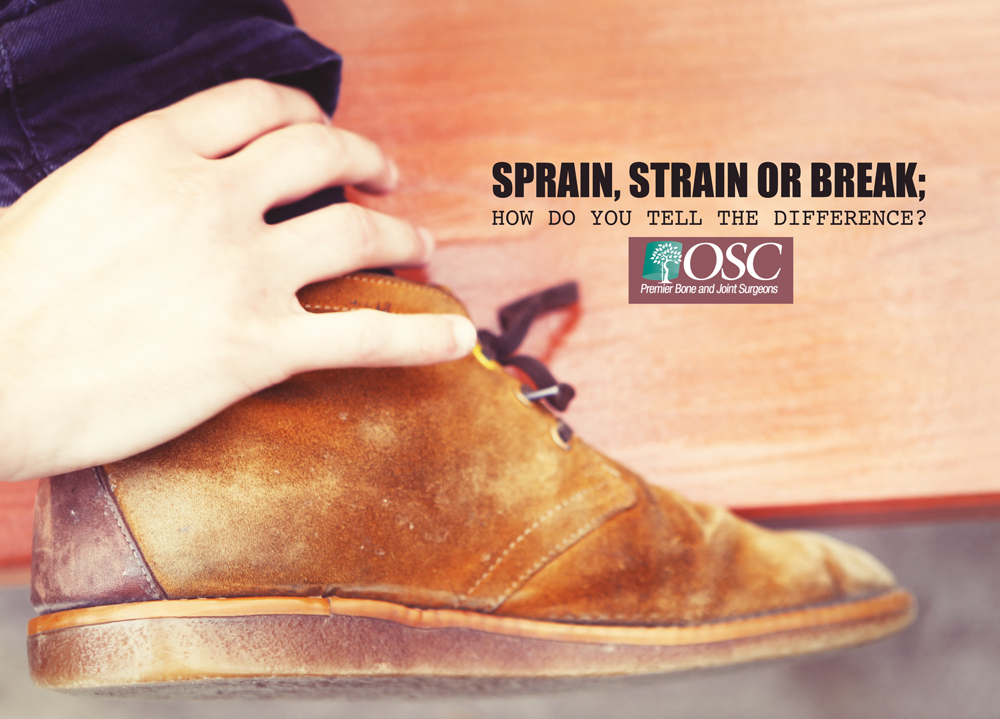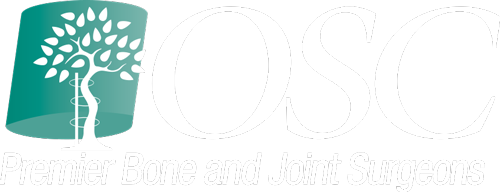
If you’ve ever sprained your ankle, stubbed your toe, or bumped into an unseen object in the dark, then you know how bad minor injuries can hurt. Sometimes we walk it off and move on. Other times the swelling doesn’t come down and mobility decreases, and that’s when you might wonder if its time to see a doctor. So how do you tell the difference between a break, sprain or strain?
Sprain
Sometimes, a sprain can be even more painful than a break. A sprain is caused by trauma that overstretches ligaments and puts stress on a joint. A mild sprain is where the ligaments are stretched but the joint remains stable, while a moderate sprain is where the ligaments are slightly torn, making the joint unstable. In some cases the sprain is so severe that the ligaments tear away from the bone, making the joint unable to function.
Strain
A strain is different from a sprain in that it’s brought on by repetitive use rather than trauma. A strain affects the muscles and ligaments but has less to do with joint function. Common strains are in the lower back and hamstrings, especially in athletes.
Break
Although severe breaks may be obvious, such as a bone protruding from the skin, or a popping or grinding sound during the injury, fractures can be hard to determine until you get a proper x-ray from your doctor. Most breaks will be accompanied by pain and swelling. If the pain increases as you put weight on the injury, and mobility becomes restricted due to inflammation, you are most likely dealing with a break or fracture. A break should always be treated by your doctor so the bone can heal properly.
For mild sprains and strains that don’t require medical attention, use the RICE method:
Rest: rest the affected area by moving it as little as possible, giving it a chance to heal.
Ice: apply an ice pack wrapped in a towel immediately to the injury in 15 minute intervals and repeat 3-4 times daily. This will help to reduce inflammation.
Compression: wrap the affected area tightly, but not so tight that blood flow is restricted. A pressure bandage works best.
Elevation: raise the injured area above the level of your heart, which will increase blood flow and promote faster healing. Laying down, you can easily prop up a leg or elbow.
Although it is good to have the knowledge to treat minor injuries, if there is any question about the severity of a sprain, strain or break, make an appointment with your doctor immediately for an x-ray. ‘Toughing out’ a break may lead to incorrect healing and much bigger problems down the road.
